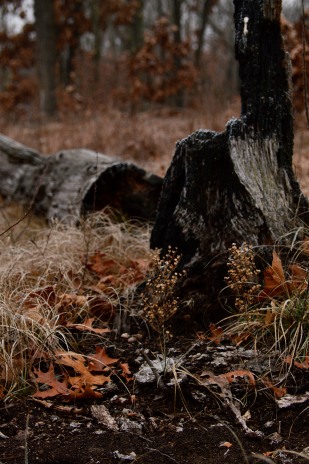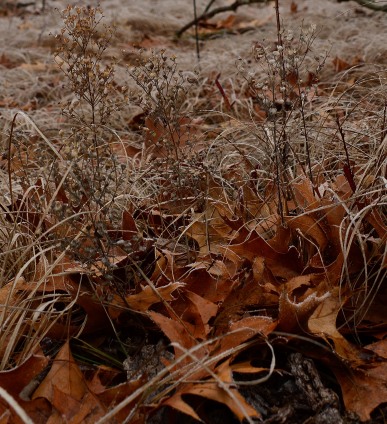The past two years have been a period of enlightenment for me. After getting out of school I’ve had the opportunity to see what a great place Indiana really is and learn about our remarkable natural history. The extensive measures that have been taken by conservation groups to protect and steward our Natural Heritage is especially a subject Indiana can pride itself on. 2014 has been rewarding as I’ve had a chance to travel much of the state, meet some great people and even pack in a few out of state trips. Perhaps the greatest honor I’ve had all year is taking on the role of Land Steward for The Nature Conservancy in Northwestern Indiana. My hope with this blog is to highlight the wonders of our natural areas. I will primarily focus on my work district with occasional visits to other parts of the state and wherever my travels take me.
The area I’ve been spending most of the past 4 months is called Prairie Border Nature Preserve. This mosaic of oak savanna, prairie (dry to wet) and pin oak flat woods is located on the northern and western outskirts of Jasper-Pulaski Fish & Wildlife Area (JP) in Jasper County Indiana. Though not located within Prairie Border, perhaps the most notable natural features of the Fish & Wildlife area are the Atlantic Coastal Plain Ponds. The entire area is known for it’s remarkable floristic diversity, abrupt changes in habitat and of course the migration of Sandhill Cranes. It’s an understatement to call this region of the state diverse. With State and other private lands there are over 9,000 acres of habitat left in the encompassing area as defined by the natural features of the landscape. I could easily do individual pieces on each habitat type as part of a whole series on the features of this area of that state and maybe I eventually will!

Typical scene at Prairie Border. The oak savannas are characterized by open woodlands with understory plants commonly found in prairie systems.
Today I’ll be discussing something that has intrigued and often puzzled me since I began observing and studying plant communities. That puzzling subject being, understanding how individual species find their niche within a defined natural system. Various plants need special conditions to survive. Many species, especially annuals, have a way of popping up and moving elsewhere in years following depending on the disturbance regime…or lack-there-of. On a recent beautiful frosty morning I had the chance to partake in the observation of one piece to nature’s elaborate puzzle.
Plants needing disturbance often means we see them pop up in our unnatural, human created habitats. Mowed roadsides and maintained power right-of-ways seem to be a favorite denizen of these “high maintenance” species. The firebreaks within the complex of Jasper-Pulaski are disc-plowed almost every year as a way to ensure vehicular access, aggressive woody invasion is put at bay and prescribed fires can be safely conducted. As a result, they have proved to be a favorite “haunt” for a few interesting plants. Having said this, the lore and excitement of “the haunt” is completely marred when viewing natural rarities in such an easily accessible and entirely human created area. So! In this series I will highlight these quirky species that tend to pop up in these areas that make us wonder…where does that plant actually grow?
One of the most interesting plants that is easily found on these firebreaks is forked blue curls (Trichostema dichotomum). The annual forb is listed as State Rare and is found in the sand country of Northwestern Indiana, open oak woods in the south-central part of the state and in the sand flats in the southwestern corner as well. It is considered infrequent and only locally common. Apparently in other parts of it’s range it is considered generally common, but here in Indiana we don’t have such a luxury with this species.
While out enhancing a beautiful south and west-facing savanna opening in Prairie Border I came across a small piece of nature’s intricate synchrony that fascinates us all. This particular site was last burned in 2011. During the burn a snag caught fire and discharged some loose woody material onto the ground next to the base of the bole. This created a small bed of coals and eventually resulted in a partially sterilized burned out patch almost completely devoid of plant life. The fire also caused the snag to fall on the ground and lay smoldering.

Trichostema growing inside the burned out, partially sterilized soil. Notice the severed, downed log as well in the background.
While searching for it’s annual home our species of interest marched right into the disturbed soil and found it’s niche. Immediately surrounding the burned out area and along the edge of the charred downed log grew several dozen robust Trichostema specimens. I searched around the rest of the savanna opening and found one or two other loosely scattered individuals. Finding an individual here and there is not necessarily uncommon in this part of the state, in the right habitat. The point of this synopsis is to show the effect a disturbance had in creating suitable habitat for this species in higher numbers than normally observed. Also, while the fire that went through this area was prescribed a similar fire would have been a very common occurrence in this part of the state and is why they are conducted. I hope to monitor this area in the coming years and see where this diminutive, but charming annual calls home next. Also, hopefully I can get some photographs while it’s in bloom!
Of course there are many other plants that characterize these beautiful and increasingly rare habitats. The ground layer is a thick carpet of warm-season grass, sedge and forbs. All of this is a direct result of the slope aspect, fire history and past management. Like I said earlier, this area of the state is well known for its floristic diversity and I wouldn’t even want to try and list all the plants that can be found just on this one small piece of ground.
“No other tract we have visited in Indiana has anything like the variety of typical prairie plants seen here”
– Alton Lindsey –Natural Areas in Indiana and their Preservation
Here’s a few plants that I couldn’t help but photograph while out seeing who else puts their roots down in this oasis called Prairie Border. Clicking on the photos will enlarge them for better viewing.

Stately clump of Schizachyrium scoparium (little bluestem) growing in a lush carpet of Carex pensylvanica (common oak sedge)
Thanks so much for reading, I hope you enjoyed my first post and I hope to continue a series on this subject and begin regular posts on a diverse array of other topics as well! All the best wishes for your holiday season and don’t forget to observe and appreciate the winter landscape!
– DL-













Enjoyed the initial post Derek. The “mystery” of plant distribution has fascinated me for years and I hope you’ll continue to touch on it from time to time. I fully agree with your characterizing of finding rare plants in the anthropogenic refugia like power rights-of-way and roadsides as a “marred” experience. Among other anthropogenic habitats, several interesting plants in NJ are found along RR rights of way– leading to friendly arguments about whether these are native or not. But whether native or not, I can’t help but feel a bit less excited about seeing these than I would in a less interfered-with-habitat.
LikeLike
Tom –
Thanks a lot for your comment. Knowing passionate, talented folks like yourself read and enjoy the material will serve as further inspiration to continue with the blog. All best – DL
LikeLike